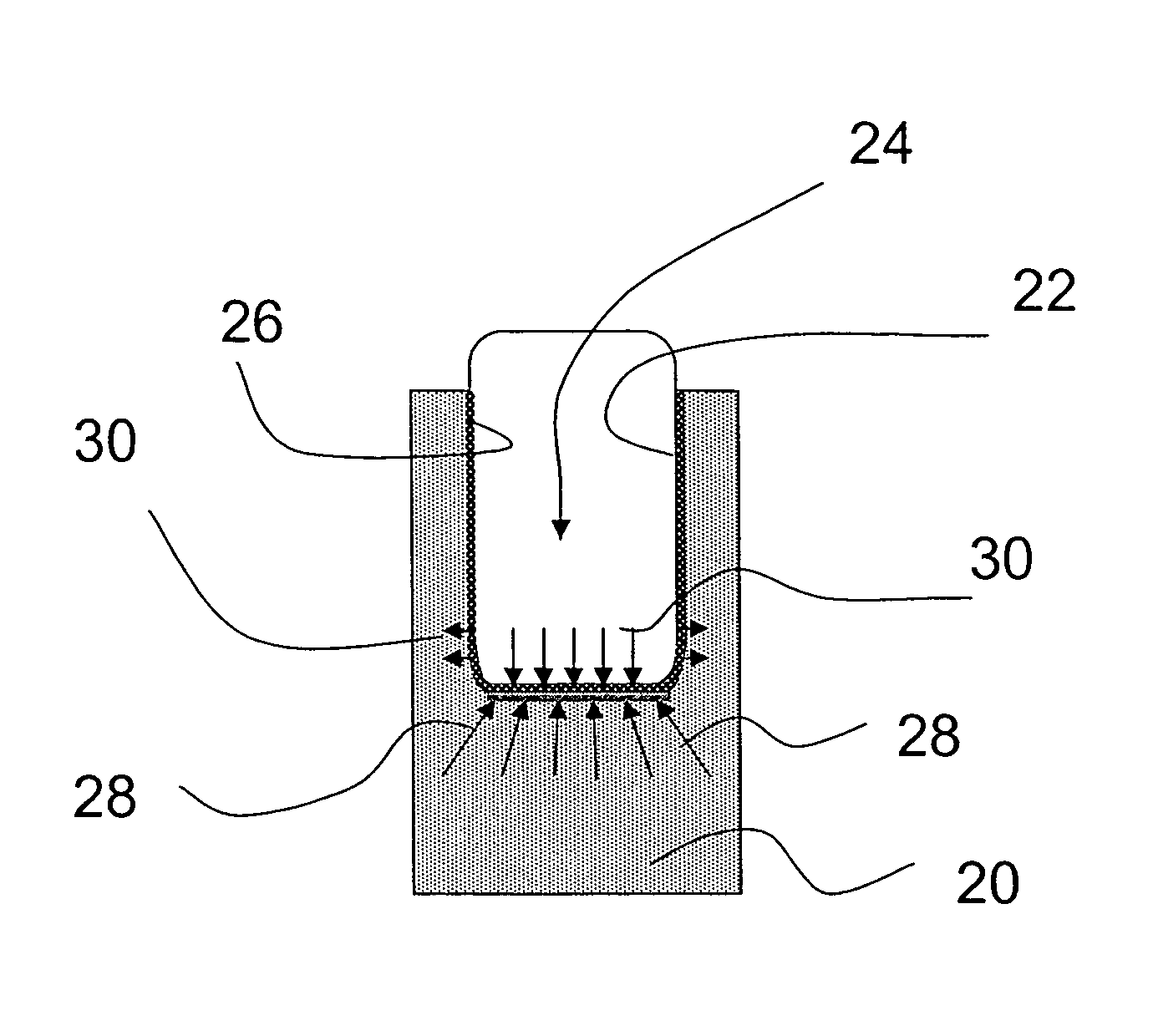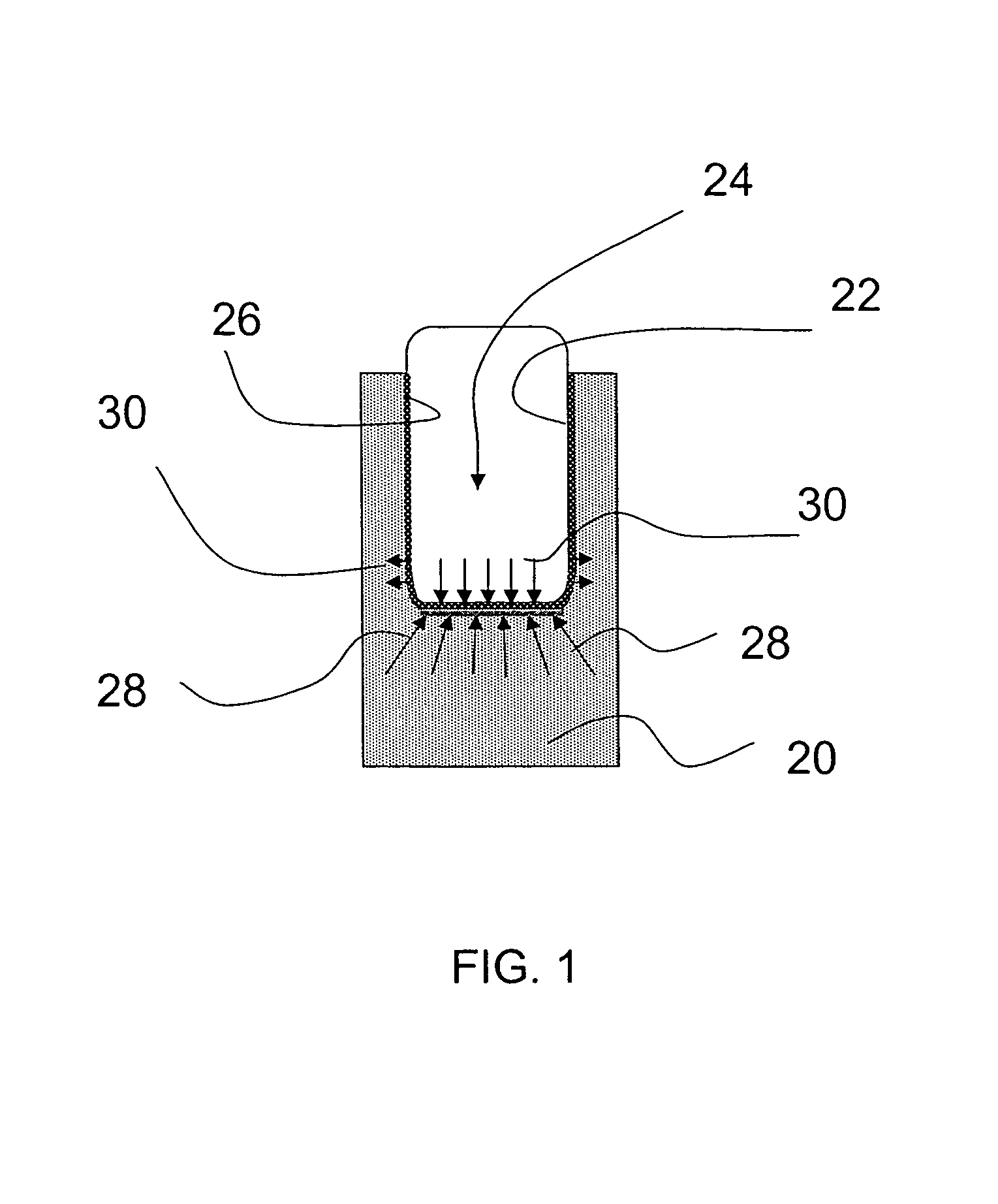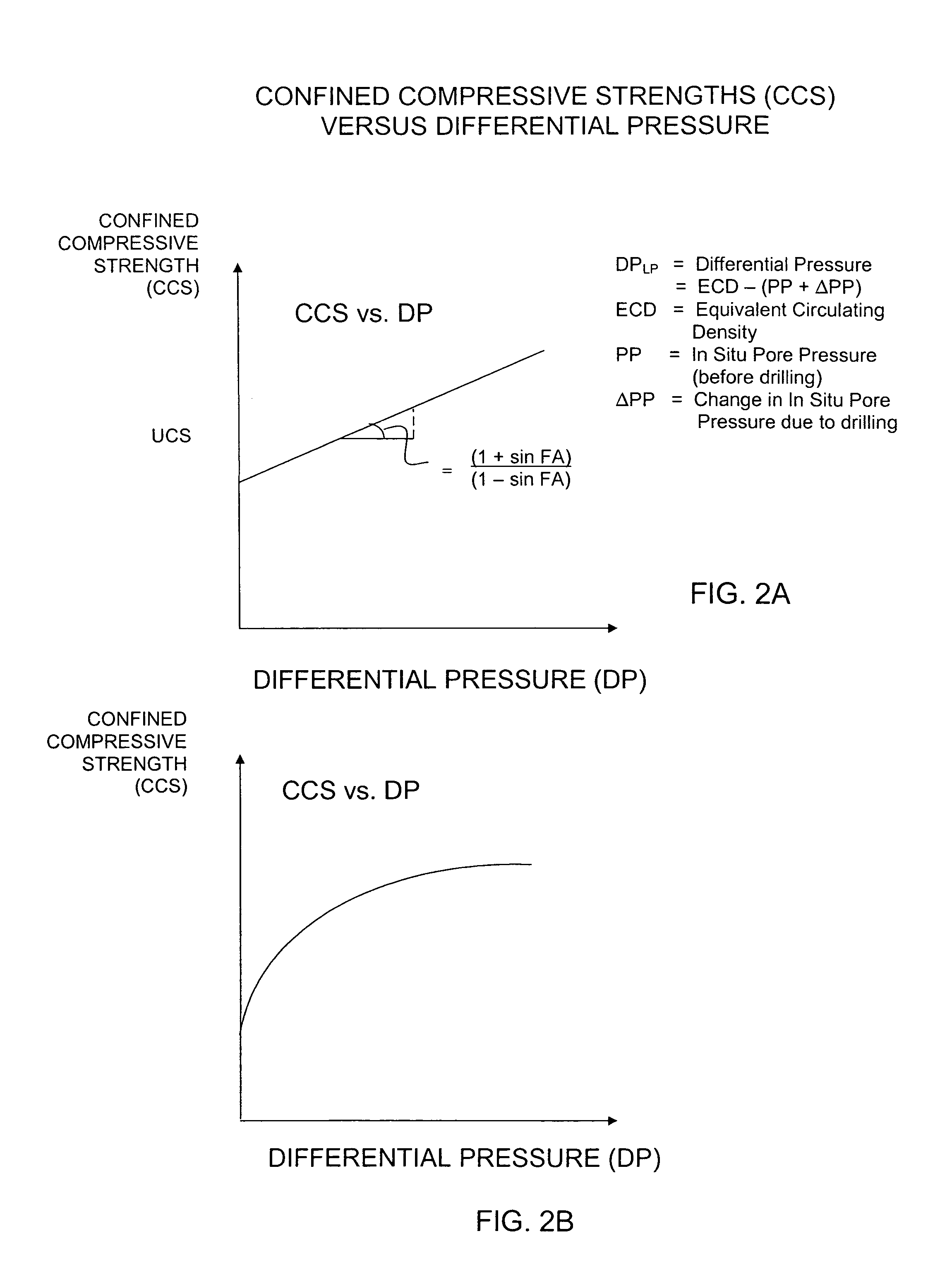Method for estimating confined compressive strength for rock formations utilizing skempton theory
a compressive strength and rock technology, applied in the field of methods for estimating rock strength, can solve the problems of no industry wide standard or methodology to predict the apparent strength of the rock, and the use of ucs for bit selection and bit performance prediction/analysis is somewhat problematic, and achieves the effect of improving accuracy
- Summary
- Abstract
- Description
- Claims
- Application Information
AI Technical Summary
Benefits of technology
Problems solved by technology
Method used
Image
Examples
Embodiment Construction
I. General CCS Calculation for Vertical Wellbores
[0028]An important part of the strength of a rock to resist drilling depends upon the compressive state under which the rock is subjected during drilling. This ability by a rock to resist drilling by a drill bit under the confining conditions of drilling shall be referred to as a rock's CCS. Prior to drilling, the compressive state of a rock at a particular depth is largely dependent on the weight of the overburden being supported by the rock. During a drilling operation the bottom portion of the wellbore, i.e., the rock in the depth of cut zone, is exposed to drilling fluids rather than to the overburden which has been removed. However, rock to be removed in a deviated or horizontal wellbore is still subject to components of the overburden load as well as to the drilling fluid and is dependent upon the angle of deviation of the wellbore from the vertical and also its azimuth angle.
[0029]Ideally, a realistic estimate of the in situ PP...
PUM
 Login to View More
Login to View More Abstract
Description
Claims
Application Information
 Login to View More
Login to View More - R&D
- Intellectual Property
- Life Sciences
- Materials
- Tech Scout
- Unparalleled Data Quality
- Higher Quality Content
- 60% Fewer Hallucinations
Browse by: Latest US Patents, China's latest patents, Technical Efficacy Thesaurus, Application Domain, Technology Topic, Popular Technical Reports.
© 2025 PatSnap. All rights reserved.Legal|Privacy policy|Modern Slavery Act Transparency Statement|Sitemap|About US| Contact US: help@patsnap.com



